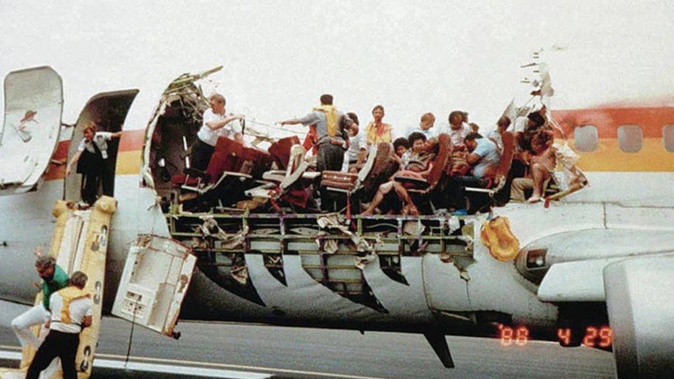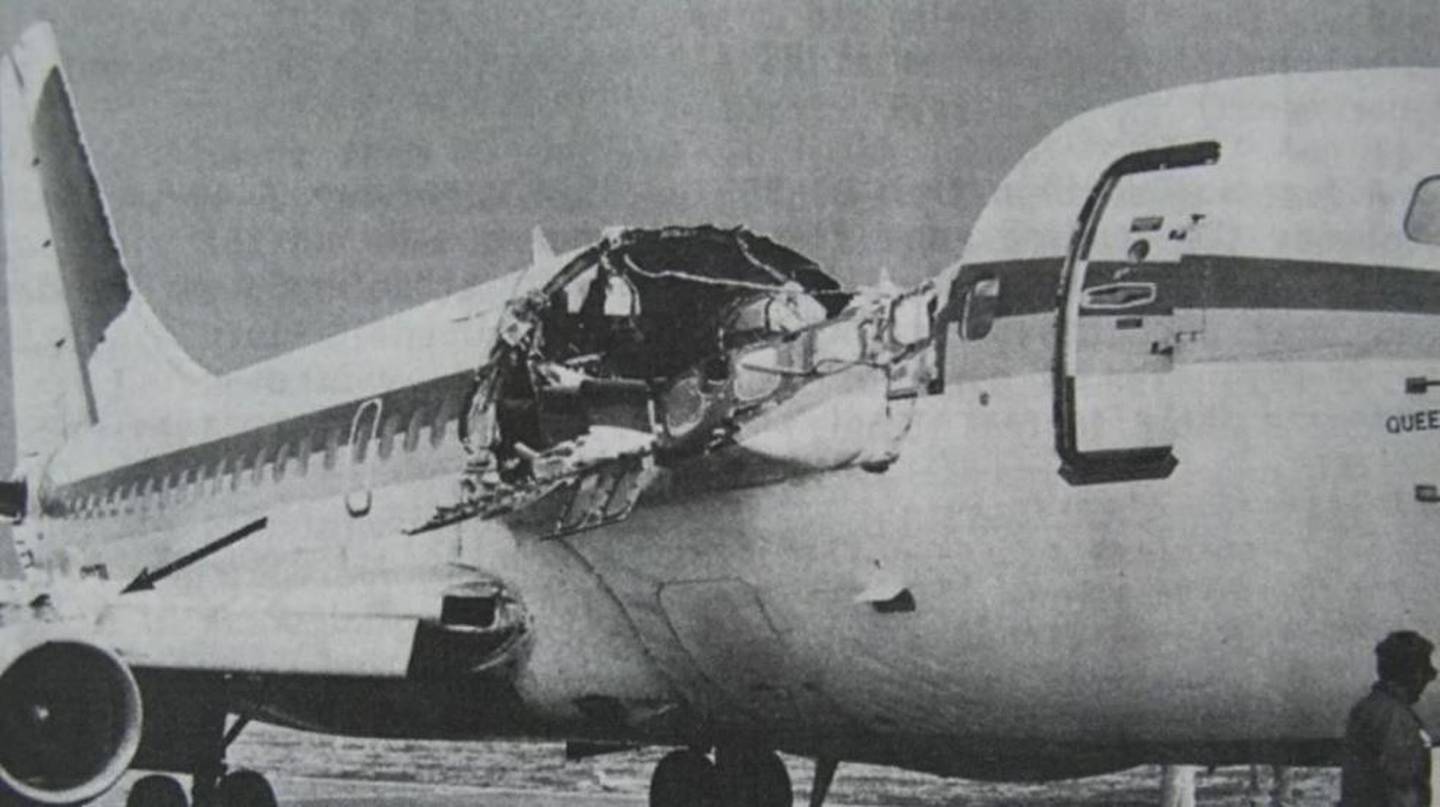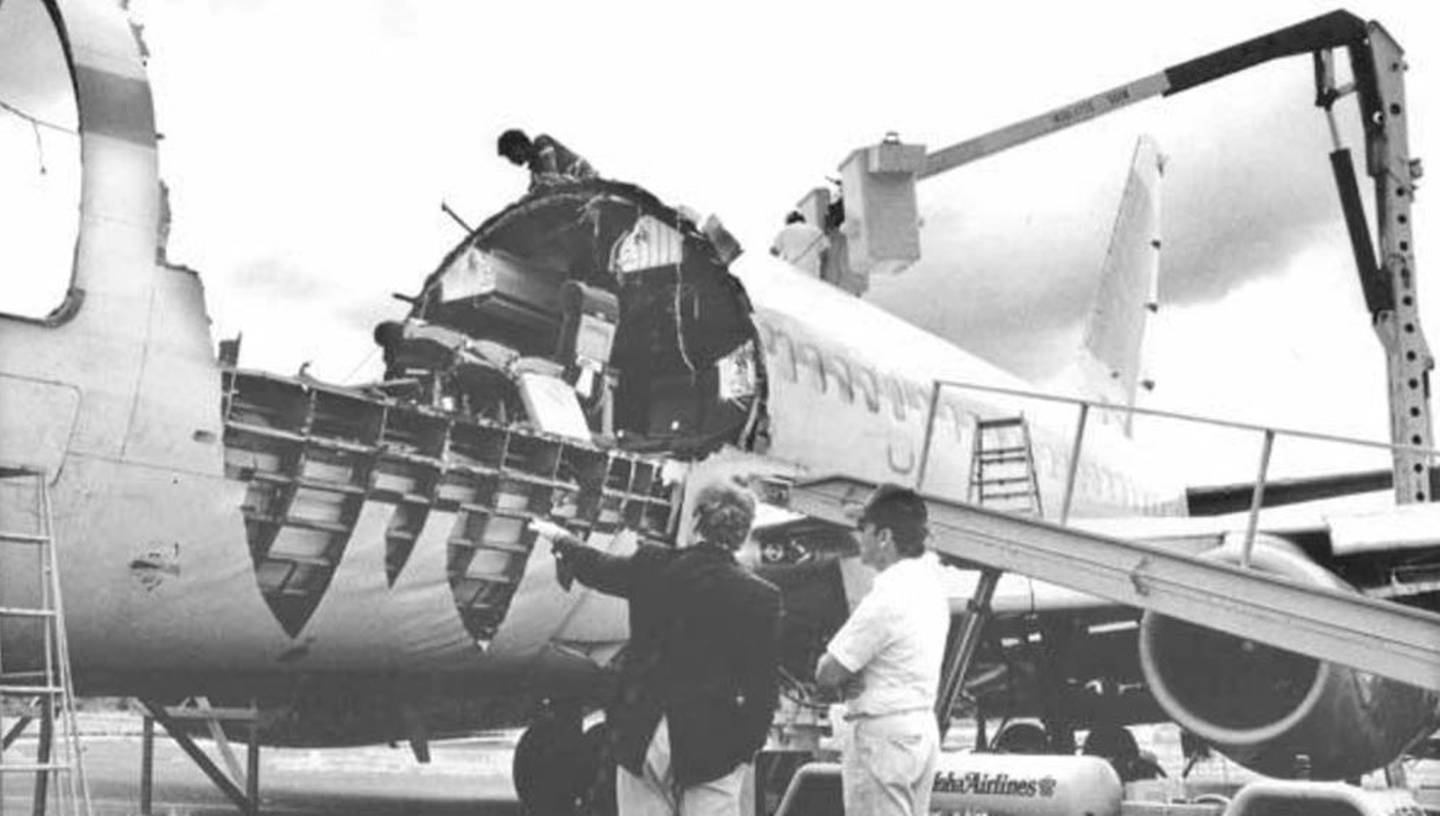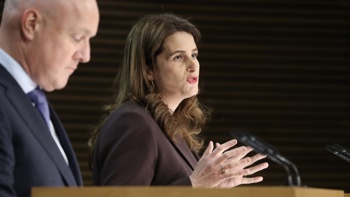
WARNING: Graphic
There were haunting screams, then silence.
April 28, 1988, will be remembered by many as the day one of the most shocking moments in aviation history occurred. It was the fateful day when Aloha Airlines Flight 243 lost the upper half of its fuselage, mid-flight while carrying 89 passengers and six crew on the short 300km hop from Hilo on Hawaii's Big Island to Honolulu on Oahu.
Thirteen minutes of horror and bloodshed followed, with one of the flight attendants blown out of the plane and the rest of those on-board left exposed to the extreme winds at 24,000 feet over the Pacific Ocean.
What happened on board was so horrific for passengers that it inspired a movie called Miracle Landing.
According to a US National Transportation Safety Board (NTSB) report, the plane experienced an "explosive decompression and structural failure" which also caused the left engine to fail.
"Approximately 18 feet [5.4m] from the cabin skin and structure aft of the cabin entrance door and above the passenger floor line separated … during flight," the report found.
"One flight attendant was swept overboard during the decompression and is presumed to have been fatally injured."
Somehow, the pilots managed to make what many called a "miracle" emergency landing at Kahului Airport in Maui.

The Aloha Airlines flight. Photo / NTSB
And the actions of a sole flight attendant became one of the most notable stories of heroism to emerge from the horror.
Purser Clarabelle (CB) Lansing, Jane Sato-Tomita and Michelle Honda were the cabin crew on the flight, and Captain Robert Schornsteiner was assisted by First Officer Madeline Tompkins in the cockpit.
First Officer Tompkins was flying the plane when the incident happened. She reported suddenly hearing a loud "whooshing" sound, while Captain Schornstheimer noticed the plane rolled from side to side and the controls went loose.
Honda, who had been hit to the ground, later told the Washington Post: "There was a smoke-like vapour in all the debris flying around.
"Paper, fibreglass, asbestos. It was kind of white. That's why I say blizzard, although it wasn't cold."
Fellow crew member Sato-Tomita had been hit on the head and lay bleeding and unconscious on the floor, and Lansing had vanished – later her crewmates learnt she had been sucked out of the plane.
Honda remembered seeing her colleague Sato-Tomita.
"The first time I saw her I thought she was dead," Honda said. "She was just on the borderline of the hole. Her head was split open in the back. She was under debris."
Honda dragged herself along the aisle, comforting and assisting terrified passengers.
"I remember being on the floor," she said, "crawling up the aisle rung by rung, telling people to put on life vests. I remember looking up at people on my back and calling up and helping them take out the vests."
She said the sheer force of the wind was a major obstacle.
"The passengers were reaching out and holding me as I went by and I grabbed their arms.
"The closer you came to the hole, the more intense the wind was. I didn't know if I would have stayed in the aircraft if I let go, and I wasn't about to find out."
Two huge ceiling panels had landed on the heads of passengers, so Honda hauled them to the back of the plane. Oxygen masks were deployed but didn't work.
The wind was "thunderous, like a storm," she said. "Like a bad storm. Like the movies, when they had bad storms in those old black-and-white horror movies."
Every time she tried to yell out a command, such as "heads down", she'd end up with a mouth full of debris. Objects she attempted to move would simply vanish.
When asked by a passenger if there was still a cockpit, Honda, covered in blood and with ripped stockings, realised she wasn't sure and unsuccessfully attempted to find out.
Once it became clear the plane was being guided to land, her attention turned to her colleague Sato-Tomita.
"I grabbed her belt and her waist and held on to the metal retainer bars."

The extensive damage. Photo / FAA
Injuries for many passengers
Of the injuries, two passengers seated in first-class – seats 2A and 2C – were hit with debris and wiring which resulted in lacerations and electrical shock burns. Passengers in the window seats of 4A and 4F suffered serious injuries including cerebral concussions and lacerations to the head.
Those in 4B, C, D and E (centre and aisle seats) suffered multiple lacerations.
Flyers in rows 5, 6 and 7 also sustained cerebral concussions and lacerations.
An 84-year-old woman in 5A had a skull fracture and a skeletal fracture. The passengers in 6A had a broken arm, lacerations and blood effusion in both ears.
Most seated in rows 8 to 21 received minor injuries such as abrasions, cuts and barotrauma (injuries caused by the sudden change in pressure such as ear, sinus or lung problems), while 25 people reported no injuries.
Failures that led to mid-air incident
The NTSB found the probable cause of the accident was the failure of the airline's maintenance programme to detect the presence of damage to the plane, including significant disbanding and fatigue, which led to the failure of the lap joint at S-10L.
Airline management was also found to have failed to have adequately supervised its maintenance force.
The Federal Aviation Administration was found to have failed to evaluate properly the airline's maintenance programme and assess its inspection and quality control deficiencies and failures, among other failures.
Ultimately, the NTSB praised the pilots' actions, and also the flight attendants, saying the crew's bravery in moving about to reassure the passengers and prepare them for landing was "exemplary".
- by Kate Schneider, news.com.au
Take your Radio, Podcasts and Music with you









